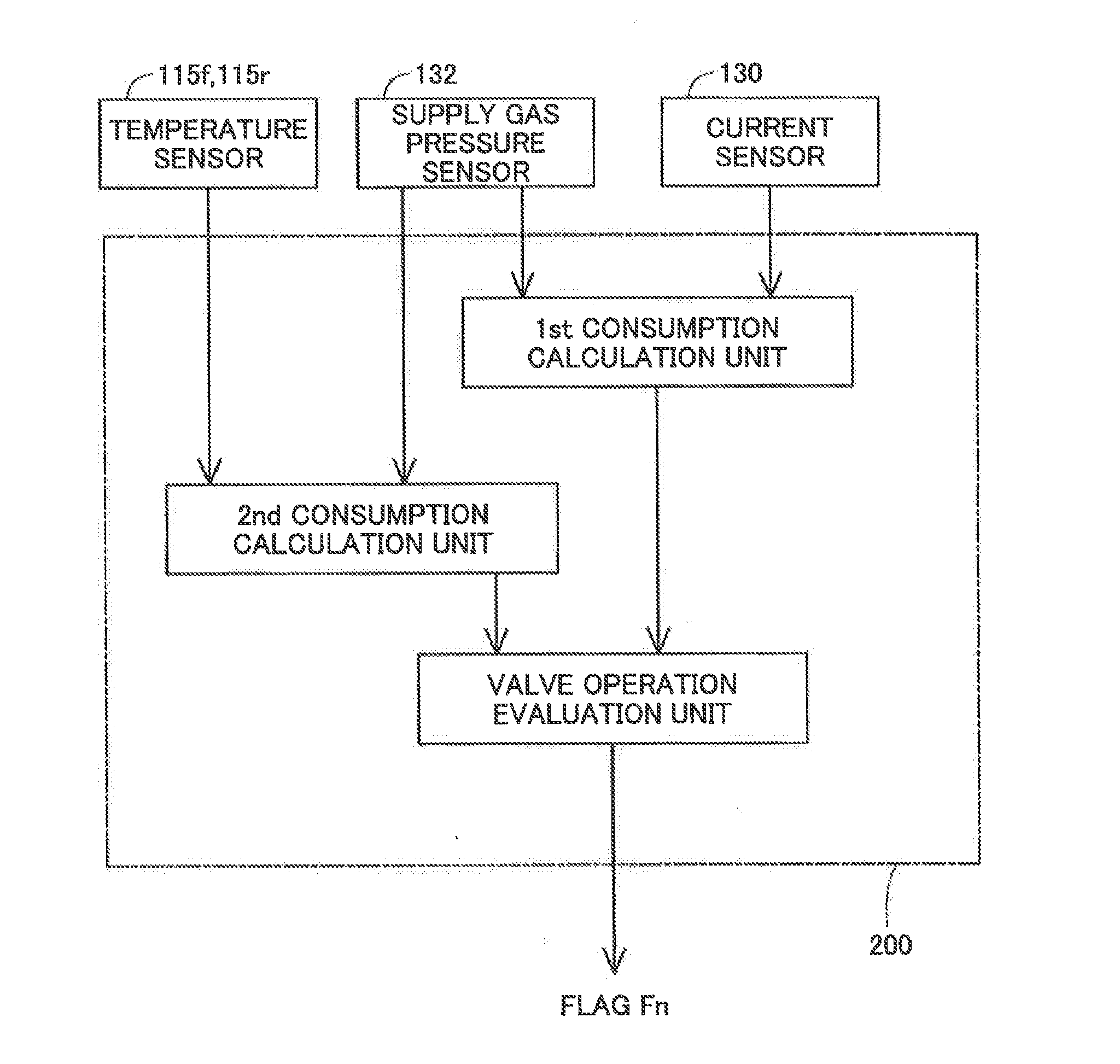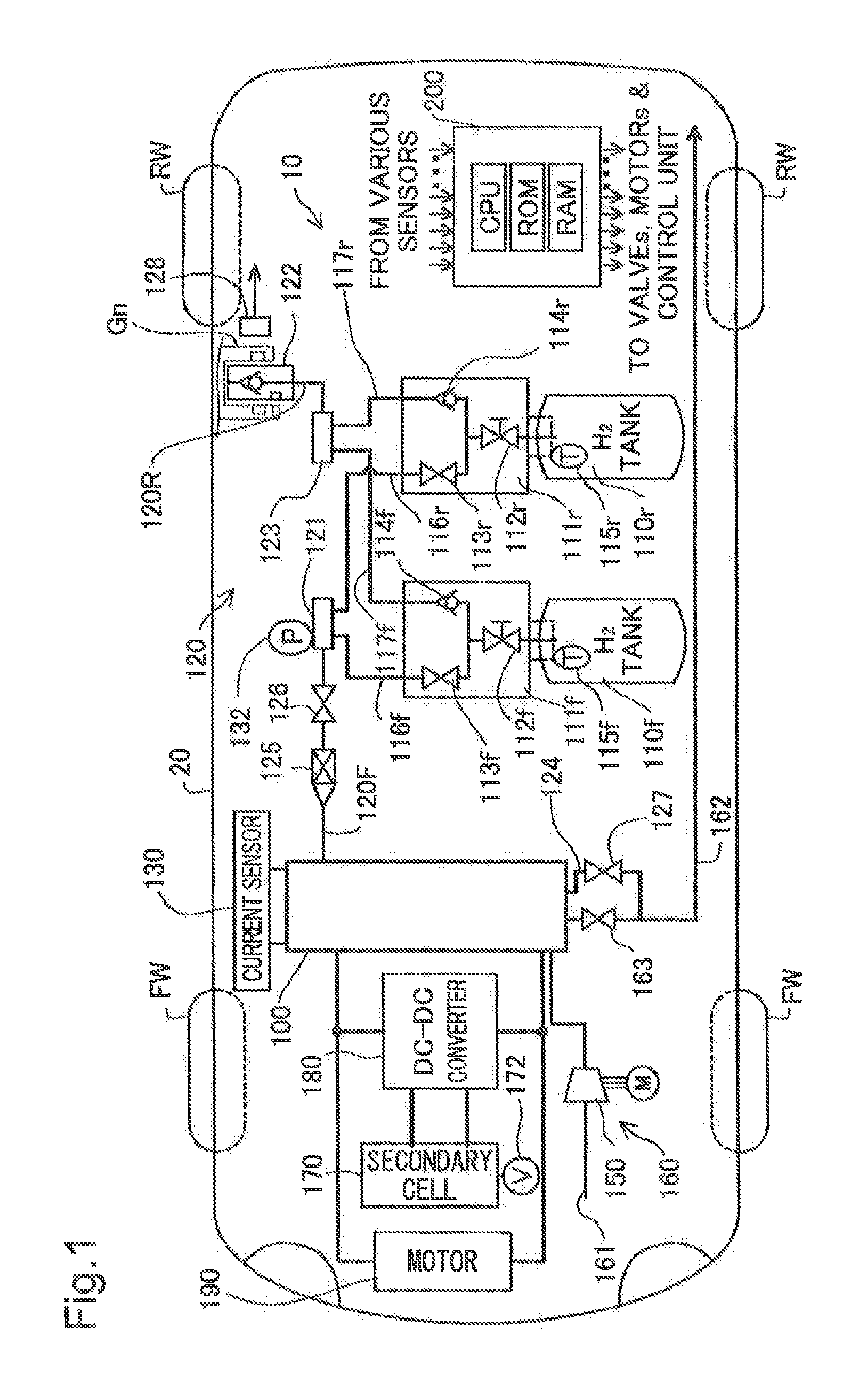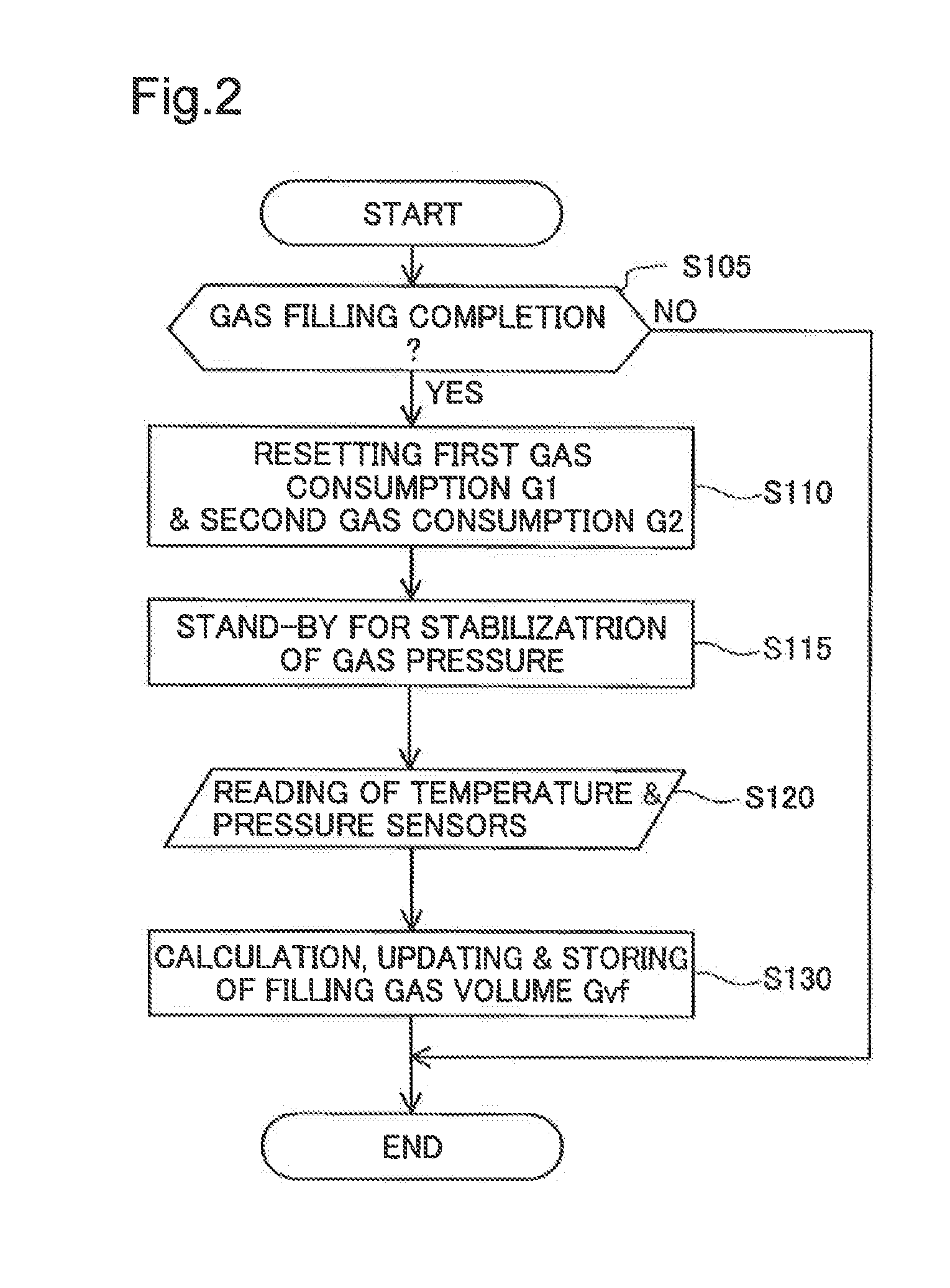Fuel cell system, fuel cell vehicle, and method for evaluating operational failure of on-off valve
a fuel cell system and on-off valve technology, applied in battery/fuel cell control arrangement, process and machine control, instruments, etc., can solve the problem of deteriorating judgment reliability, affecting the reliability of evaluation, and difficult to detect an opening failure of the on-off valve, so as to prevent deterioration of judgment reliability and reduce the effect of reliability in evaluation
- Summary
- Abstract
- Description
- Claims
- Application Information
AI Technical Summary
Benefits of technology
Problems solved by technology
Method used
Image
Examples
Embodiment Construction
[0025]Embodiments of the present invention are described below in reference to the drawings. FIG. 1 is an illustrative drawing schematically showing a fuel cell system 10 as a first embodiment of the present invention.
[0026]As shown in the drawing, the fuel cell system 10 is mounted on a fuel cell vehicle 20 and comprises a fuel cell 100, a hydrogen gas supply system 120 including two gas tanks, an air supply system 160 including a motorized compressor 150, a cooling system, not shown, a secondary cell 170, a DC-DC converter 180, and a control unit 200. The fuel cell 100 is configured by layering multiple power generation modules equipped with a membrane electrode assembly (MEA), not shown, and is installed under the vehicle floor between the forward wheels FW and rear wheels RW. The fuel cell 100 generates power by electrically reacting hydrogen contained in the hydrogen gas supplied from the hydrogen gas supply system 120 described later and oxygen contained in the air supplied fr...
PUM
 Login to View More
Login to View More Abstract
Description
Claims
Application Information
 Login to View More
Login to View More - R&D
- Intellectual Property
- Life Sciences
- Materials
- Tech Scout
- Unparalleled Data Quality
- Higher Quality Content
- 60% Fewer Hallucinations
Browse by: Latest US Patents, China's latest patents, Technical Efficacy Thesaurus, Application Domain, Technology Topic, Popular Technical Reports.
© 2025 PatSnap. All rights reserved.Legal|Privacy policy|Modern Slavery Act Transparency Statement|Sitemap|About US| Contact US: help@patsnap.com



